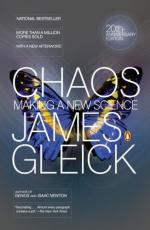
|
| Name: _________________________ | Period: ___________________ |
This test consists of 15 multiple choice questions and 5 short answer questions.
Multiple Choice Questions
1. What studies the behavior of dynamical systems that are highly sensitive to initial conditions?
(a) Nonlinear system.
(b) Deterministic Nonperiodic Flow.
(c) Chaos theory.
(d) Butterfly effect.
2. In statistics, what refers to any statistical relationship between two random variables or two sets of data?
(a) Dependence.
(b) Prediction.
(c) Commonality.
(d) Diversity.
3. When was Edward Lorenz born?
(a) 1914.
(b) 1924.
(c) 1921.
(d) 1917.
4. When was the Massachusetts Institute of Technology founded?
(a) 1861.
(b) 1877.
(c) 1895.
(d) 1823.
5. Where is Stephen Smale from?
(a) Fargo, North Dakota.
(b) Aurora, Illinois.
(c) Atlanta, Georgia.
(d) Flint, Michigan.
6. In mathematics and statistics, a _____ is a quantity that serves to relate functions and variables using a common variable when such a relationship would be difficult to explicate with an equation.
(a) Divisor.
(b) Parameter.
(c) Fraction.
(d) Paradigm.
7. In Chapter 1, "The Butterfly Effect," the author writes, "The Butterfly Effect acquired a technical name: sensitive dependence on _____________"?
(a) "Initial conditions."
(b) "Ideal conditions."
(c) "Controlled conditions."
(d) "Random conditions."
8. When was Steven Smale born?
(a) 1932.
(b) 1943.
(c) 1930.
(d) 1938.
9. Who is attributed to the following quote from Chapter 2, "Revolution": "Of course, the entire effort is to put oneself outside the ordinary range of what are called statistics"?
(a) James Gleick.
(b) Stephen Spender.
(c) Thomas S. Kuhn.
(d) Richard Feynman.
10. From what institution did Thomas S. Kuhn earn his B.S., M.S. and Ph.D. degrees in physics?
(a) Stanford University.
(b) Princeton University.
(c) Loyola University.
(d) Harvard University.
11. James Yorke is credited with creating what term in reference to science?
(a) Rambling.
(b) Frantic.
(c) Chaos.
(d) Pandamonium.
12. What did Foucault use as a way to demonstrate the earth's rotation, according to the author in Chapter 2, "Revolution"?
(a) A twenty-story high pendulum.
(b) A turkey baster.
(c) A softball.
(d) A six-foot wide magnifying glass.
13. Where was Robert May born?
(a) Cairo, Egypt.
(b) Sydney, Australia.
(c) Tokyo, Japan.
(d) Berlin, Germany.
14. What can be formed by taking a finite Cartesian product of the Cantor set with itself, making it a Cantor space?
(a) Helium in a Box.
(b) Cantor dust.
(c) Euclidean space.
(d) Fractal.
15. When was James Yorke born?
(a) 1941.
(b) 1949.
(c) 1937.
(d) 1932.
Short Answer Questions
1. What does Gleick assert was the inspiration for Archimedes in Chapter 2, "Revolution"?
2. One of the implications of what theorem is that if a continuous discrete dynamical system on the real line has a periodic point of period 3, then it must have periodic points of every other period?
3. According to Gleick in Chapter 3, "Life's Ups and Downs," what will lead to an increased, steady state in the idealized population?
4. What is a natural science concerned with the study of life and living organisms, including their structure, function, growth, origin, evolution, distribution, and taxonomy?
5. James Yorke realized that one of the largest problems with his work was that mathematicians and physicists were often worlds apart because they did not what?
|
This section contains 470 words (approx. 2 pages at 300 words per page) |

|




